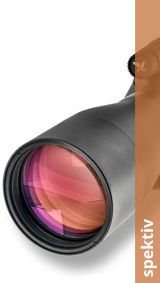Select the desired technical term from the letter field on the right. Below is an excerpt of the technical terms currently stored. We endeavour to explain this wiki using examples from our practice. We are also constantly adding new technical terms to the wiki. Thank you for any information if a technical term is still missing.
- Aspherical lensesThe use of aspherical lenses leads to a reduction in the overall length of the binoculars and in some cases to a significant reduction in weight. " More info for optics
- Interpupillary distanceThe interpupillary distance is the optimum distance between the eyepiece lens and the pupil of the eye. " More info for binoculars
- Exit pupilIn addition to the twilight number, the binocular exit pupil at the eyepiece of the binoculars is also very important for seeing in twilight (twilight vision). " More info Calculate and explain for binoculars
- Calculation Angular minute1 MOA (one minute of angle or minute of angle) is 1/60th of a degree of angle. " More info or MOA for riflescopes
- CoatingsWith the help of a simple coating, this loss of light transmission (transmission loss) is reduced to 1.5%, for example. This already increases the amount of light that reaches your eyes to around 80%. " More info and coatings for optics - Coating or Multi Coated
- Image field curvatureThe image produced by a lens objective has a spherical error by nature. This error can be corrected using appropriate optical elements. " More info - Flattener lenses for optics
- Roof prism
- Twilight number and Twilight performanceIn order to be able to recognise details over long distances even in twilight, binoculars with high magnification and corresponding twilight performance (e.g. 10x56 or 8x56) are recommended. " More info with binoculars
- The reticle in the first focal plane of riflescopes
- The reticle in the second image plane of riflescopes
- The DDoptics Glass fibreA state-of-the-art position and movement sensor registers every movement and the position of the optics. A controller interprets this data so that the illuminated dot is there when you need it. " More info Rifle Scope Luminous point IIUnfortunately, fine details such as the light unit are often skimped on. And this has far-reaching consequences! Not so with DDoptics. " More info
- Dioptre correctionThe dioptre correction on the eyepiece is used to compensate for different visual acuities of the eyes. " More info for Spectacle wearerLooking through binoculars with glasses reduces the field of view by 50-60%. An eyepiece with dioptre compensation offers a remedy for short-sightedness or long-sightedness. " More info for binoculars
- Binoculars for BirdwatchingA good birdwatching telescope rewards you with excellent image brilliance and colour fidelity! " More info
- Binoculars waterproof or Water pressure-tightWith a watertight lens, a clean and dry gas filling in the form of an argon or nitrogen filling creates an "internal climate" that prevents fogging. " More info
- Binoculars - StructureThe different types of DDoptics binoculars Binoculars can be divided into two main types according to their basic construction: Construction with roof prism (different types of construction) or with Porro prism. Both designs have their unique advantages and disadvantages. In principle, Porro and roof prism binoculars can offer the same performance depending on the type of glass (BAK 4, crown glass, etc.), the amount of coating required and the manufacturing quality. The details decide whether they are good binoculars or not. " More info and PrismsLenses have the property of imaging objects upside down and laterally inverted - therefore the image must be rotated again. " More info
- Binoculars with retractable EyecupsFor spectacle wearers, all DDoptics binoculars are equipped with retractable eyecups. This makes observation easier and enlarges the field of vision. " More info Ideal for spectacle wearers
- Function of the eye - adaptation to light and darkness
- Light transmissionLight transmission is the ability of optical glass or optical systems to "let through" as many light rays as possible. " More infoLight transmission for optical devices
- Luminous intensityFor night glasses, which are ideal for sitting game and as sow glasses, the light intensity is the most important feature. " More info Viewing glasses for twilight or at night
- LensWhen we talk about the objective lens of binoculars, we mean the front lens. The front lens is the foremost lens of the objective. " More info
- Lens diameterThe larger the lens diameter, the more light can be absorbed by the lens of the optical system. Glass purity plays a major role. " More info for binoculars and riflescopes
- EyepieceThe eyepiece is the lens group of an optical system that faces the eye. The eyepieces consist of several separate lenses - achromats (3-6 individual lenses). " More info for binoculars and riflescopes
- Optics Glass typesIn addition to the coating of optics, the glass quality or type of glass is one of the most important quality factors for binoculars and riflescopes " More info for optical devices
- Optics EnlargementThe magnification of a binocular model is perhaps the most misunderstood feature. High magnification can be useful! " More info
- Optical coating and CoatingIf light hits a glass-air surface (e.g. with a roof prism), the reflection causes a loss of light. " More info of lenses and prisms
- Parallax errors and Parallax compensationIf a shooter does not look "straight" but "diagonally" through the telescopic sight eyepiece, an aiming error occurs - the so-called parallax. " More info - Telescopic sight
- PorroBinoculars with porro prisms are the real universal binoculars, are inexpensive and offer brighter images with higher contrast. " More info Prism
- Prisms - different types in binoculars
- Prism comparison of Porro and Roof prismsThe main difference between the roof edge and the Porro system is the roof edge, where one of the reflective surfaces resembles a house roof (see picture below). " More info
- Edge sharpnessFor technical reasons, image sharpness decreases from the centre of the image to the edge with every lens (due to the shape of the lens). " More info for binoculars
- RNP - Raindefender NanoThanks to the DDoptics RNP coating on the outer lens surfaces, water does not adhere to the glass. " More info Protection
- Shot resistanceWhether a target optic is bulletproof is one of the most important criteria when selecting a riflescope - especially for powerful calibres. " More info for riflescopes
- Field of vision and Point of viewThe size of the field of view indicates the width of the terrain that can be observed through the binoculars at a distance of 1000 metres. " More info for optics such as binoculars and riflescopes
- Nitrogen fillingFilling with dry nitrogen (nitrogen filling) reduces the moisture content during assembly and thus prevents the inside of the lens from fogging up later. " More info for binoculars







